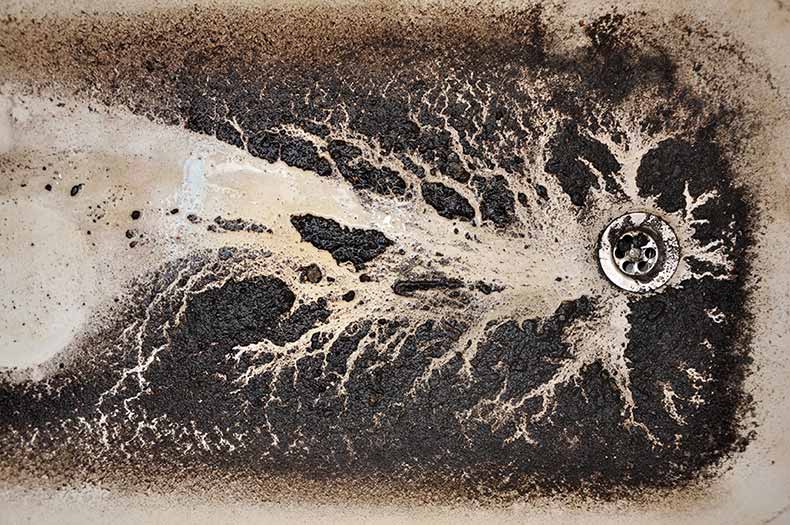Were you in search of advice about What To Do If Sewage Starts Backing Up Into the Shower?

Sewer back-up in the tub can be a traumatic and unsanitary problem for any type of house owner. Not only is it inconvenient, however it likewise presents significant health and wellness dangers and shows underlying concerns with the plumbing system. Recognizing why sewage is showing up through the bathtub is essential for taking suitable action to resolve the issue successfully.
Intro to the Problem
Comprehending the Issue
When sewer draws back up right into the bath tub, it's a clear indication of a problem with the drainage system. The wastewater that should be flowing far from your home is rather locating its way back into your living space, which can cause significant damage and health hazards.
Potential Reasons
Several elements can contribute to sewer backup in the bathtub. From blockages in the sewage system line to issues with the plumbing facilities, determining the source is important for finding a remedy.
Common Reasons for Sewer Back-up
Obstructions in the Sewer Line
Among the most typical causes of sewage back-up is an obstruction in the sewer line. This can happen due to the buildup of particles, oil, or international objects in the pipelines, avoiding correct circulation and creating sewer to back up into your tub.
Tree Origin Breach
Tree roots looking for wetness and nutrients can penetrate sewer lines via little fractures or joints. Over time, these roots can expand and increase, creating considerable damage to the pipelines and leading to sewer backup issues.
Aging Framework
Older homes might have outdated plumbing systems that are a lot more vulnerable to deterioration, fractures, and wear and tear. As pipes age, they end up being much more prone to leakages and obstructions, boosting the possibility of sewer backup occurrences.
Heavy Rainfall or Flooding
During durations of heavy rainfall or flooding, the sewer system might end up being overwhelmed with excess water, triggering backups and overflows. This can cause sewage supporting right into tubs and other fixtures inside the home.
Wellness Risks Associated with Sewer Back-up
Contamination of Water
Sewer backup can pollute the supply of water in your home, presenting a major health and wellness threat to you and your household. Direct exposure to polluted water can bring about gastrointestinal problems, skin infections, and other diseases.
Spread of Condition
Sewer contains dangerous microorganisms, viruses, and parasites that can create a variety of illness, consisting of hepatitis, cholera, and gastroenteritis. Entering into contact with sewage or polluted surface areas puts you in jeopardy of infection.
Mold and mildew Growth
Wetness from sewage back-up can develop optimal problems for mold development in your house. Mold and mildew spores can intensify respiratory system problems and create allergic reactions in sensitive individuals, making punctual cleaning essential.
Indications of Sewer Backup
Foul Odors
Undesirable smells emanating from drains or components, especially in the shower room, might indicate sewer back-up issues. These odors are often solid and consistent, signifying an issue that calls for instant focus.
Slow Draining Fixtures
Bath tubs, sinks, and bathrooms that drain pipes slowly or not whatsoever could be experiencing sewer backup. If several components are impacted all at once, it's likely that the concern stems from an usual point, such as the primary drain line.
Gurgling Sounds
Unusual gurgling or gurgling sounds coming from drains when water is running somewhere else in your home are a sign of air entraped in the plumbing system. This air accumulation can result from sewer back-up and must be examined promptly.
Immediate Actions to Take
Turning Off Supply Of Water
In the event of sewage backup, it's necessary to shut off the water supply to stop further contamination and damages. Locate the primary water shutoff valve in your house and shut it off up until the problem can be dealt with.
Calling a Specialist Plumber
Managing sewer backup is not a DIY job. Call a certified plumber with experience in handling sewage-related problems to examine the situation and carry out needed repair services or cleanings.
Staying Clear Of Contact with Polluted Water
Until the sewer backup is solved, prevent contact with polluted water to prevent the spread of bacteria and microorganisms. Put on protective gear if you have to remain in the damaged location and wash your hands thoroughly afterward.
Safety nets
Regular Upkeep of Sewage System Lines
Arrange normal assessments and maintenance of your sewer lines to identify and address potential concerns before they escalate into significant problems. This can consist of cleaning out particles, evaluating for tree root invasion, and fixing any type of broken pipelines.
Setting Up Bayou Shutoffs
Consider mounting bayou valves in your plumbing system to avoid sewage from receding into your home during durations of heavy rainfall or flooding. These shutoffs instantly close when water starts backing up, shielding your residential or commercial property from contamination.
Appropriate Disposal of Home Waste
Stay clear of flushing anything apart from toilet paper and human waste down the bathroom to stop obstructions and clogs in the sewer line. Dispose of grease, oil, and various other family chemicals correctly to lessen the risk of plumbing problems.
Tidying up After Sewage Back-up
Disinfection Procedures
Extensively sanitize and disinfect influenced locations after sewage backup to get rid of harmful germs and stop mold growth. Use ideal cleaning items and protective equipment to guarantee secure and efficient cleanup.
Restoration of Affected Locations
Fix any kind of damages to flooring, walls, or components brought on by sewer back-up. Depending upon the extent of the damage, you might need to change carpeting, drywall, or various other materials to restore your home to its pre-loss condition.
Why Is Water Backing Up in My Bathtub When I Flush My Toilet?
What to do about a sewer line clog
First, don’t bother with plunging. No amount of plunging will dislodge the clog in a sewer line. The clog is too far away. Plungers are for clogs in the toilet itself, not the sewer line. Plus, the most likely causes of a sewer clog are:
Tree roots Flushed toys or feminine products Grease buildup Those items don’t move easily. And in the case of tree roots, the roots need to be cut out of the pipe and the pipe will need to be repaired.
You’ll need a closet auger. A closet auger is a type of plumber’s snake with a protective cover to keep from scratching the delicate porcelain toilet. If the clog is further down, you may need to remove the toilet or use one of your cleanouts to get to the clog.
We also recommend doing a video inspection of the drain to ensure that the cause of the clog has been completely removed. Otherwise, you could have the same problem again in a few days or weeks.
https://mspplumbingheatingair.com/blog/why-is-water-backing-up-in-my-bathtub-when-i-flush-my-toilet

We had been brought to that report about Why is There Sewage Coming Up Through the Bathtub from an associate on a different web property. Feel free to pause to promote this blog posting if you enjoyed reading it. Thank you so much for taking the time to read it.
Click Here
 Jennifer Grey Then & Now!
Jennifer Grey Then & Now! Joshua Jackson Then & Now!
Joshua Jackson Then & Now! Melissa Sue Anderson Then & Now!
Melissa Sue Anderson Then & Now! Naomi Grossman Then & Now!
Naomi Grossman Then & Now! Sarah Michelle Gellar Then & Now!
Sarah Michelle Gellar Then & Now!